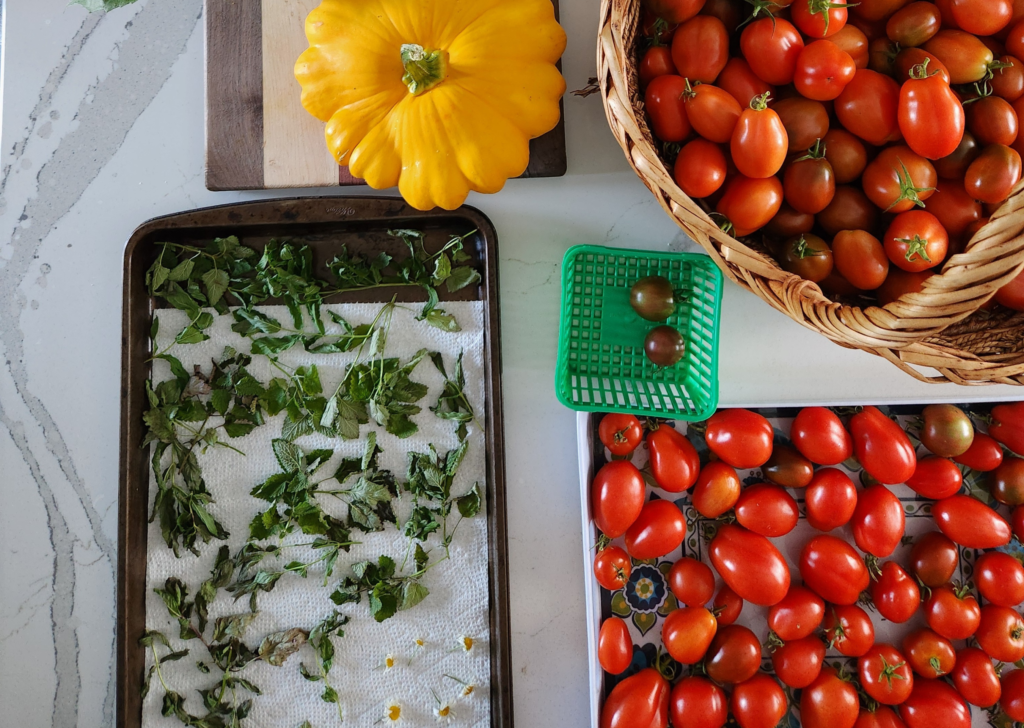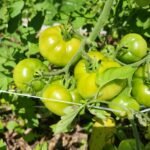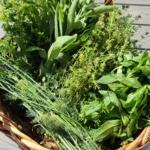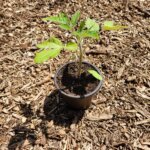If you’ve been dreaming about growing your own food but think your balcony is too small, think again. Balcony gardening is one of the easiest ways to start growing fresh vegetables, no yard required. With just a few containers, some sunshine, and the right plants, you can turn even the tiniest apartment balcony or patio into a productive mini garden.
This post may contain affiliate links. If you use these links to buy something we may earn a commission. Thanks.
Whether you’re a complete beginner or just short on space, these six easy balcony vegetables are perfect for starting your own container garden. They’re compact, fast-growing, and packed with flavor. Proving you don’t need a big backyard to enjoy homegrown food.
Balcony Gardening for Beginners: Quick Setup Checklist
Use this five-minute checklist to set yourself up for success with balcony vegetables.
- Sunlight: Aim for 6–8 hours for fruiting crops (tomatoes, peppers, strawberries). Leafy greens and herbs tolerate partial shade.
- Containers: Choose food-safe pots with drainage holes; avoid overly small pots that dry out fast.
- Potting mix: Use a high-quality container mix (not garden soil). Mix in slow-release fertilizer at planting.
- Watering plan: Balcony containers dry quickly, set a schedule (daily light check, water when top inch is dry).
- Support: Add cages, stakes, or trellises for tomatoes/peppers before the plant needs them.
- Wind & heat: If your balcony is windy or blazing hot mid-day, add a light shade cloth or tall plant “windbreak.”
- Safety: Ensure planters are placed securely and your balcony can safely handle the weight of moist containers.
Cherry Tomatoes: The Best Balcony Vegetable for Beginners
Growing cherry tomatoes is often the first veggie thing people try on a balcony, and for good reason. They’re compact, reliable, and incredibly rewarding. One healthy plant can pump out dozens of sweet, snack size tomatoes, especially if you give it a nice sunny spot. Which is why it takes top spot on our beginner vegetables list.

Just tuck it into a 5-gallon pot with drainage holes, add a tomato cage or other support, and set it where it’ll get at least 6 hours of direct sunlight. Keep the soil evenly moist, and give it a shot of balanced fertilizer every couple of weeks. That’s it. You’ll be harvesting little red, yellow, or orange gems in no time.
Tomatoes are far and away the biggest plant on our list but it’s also the most abundant. Depending on your growing zone you can harvest fresh cherry tomatoes from July through September into the beginning of October.
Tips:
- Use a 5-gallon container with good drainage.
- Place in full sun (6–8 hours).
- Water consistently and feed with a balanced fertilizer every 2 weeks.
Other helpful tomato articles:
Lettuce: Fast-Growing Balcony Vegetable
If you’re the kind of person who likes instant gratification (no judgment!), growing lettuce is your new best friend. It grows fast, doesn’t ask for much, and can handle a bit of shade, perfect for balcony gardens that don’t get full sun all day.
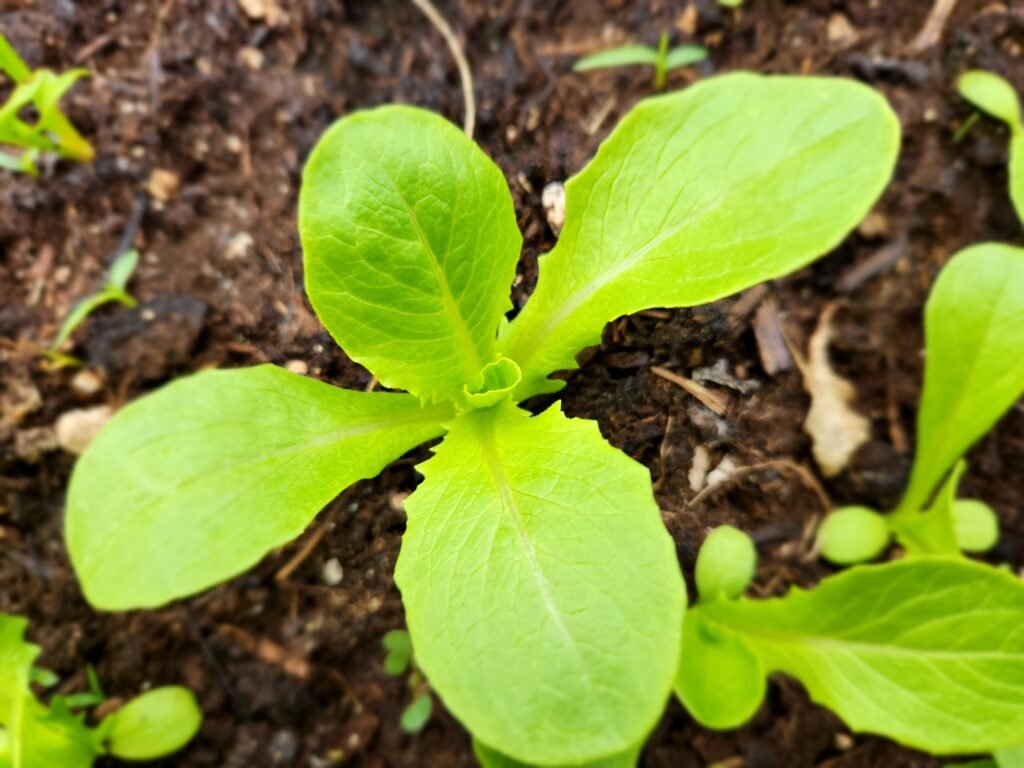
Go with a shallow container, at least 6 inches deep, and sprinkle in a mix of leaf lettuce seeds. Within a couple of weeks, you’ll have baby greens ready to snip. Keep it watered and don’t let it dry out, especially in the heat.
You can harvest individual leaves off the lettuce plant or harvest the hole thing. Lettuce can also easily be succession planted so you’ll have a continuous supply of fresh leafy greens.
Tips:
- Grow in shallow containers (6 inches deep is fine).
- Partial shade works great, especially in hot weather.
- Water regularly to prevent bitterness.
Read our Lettuce Seed Saving guide to save seeds from your favourite lettuce varieties.
Herbs: Big Flavor, Small Pots
When it comes to growing food in small spaces, herbs are hard to beat. They take up almost no room, smell incredible, and instantly level up your home cooking. These beginner vegetables also help you save the most money on your grocery bill from you garden.
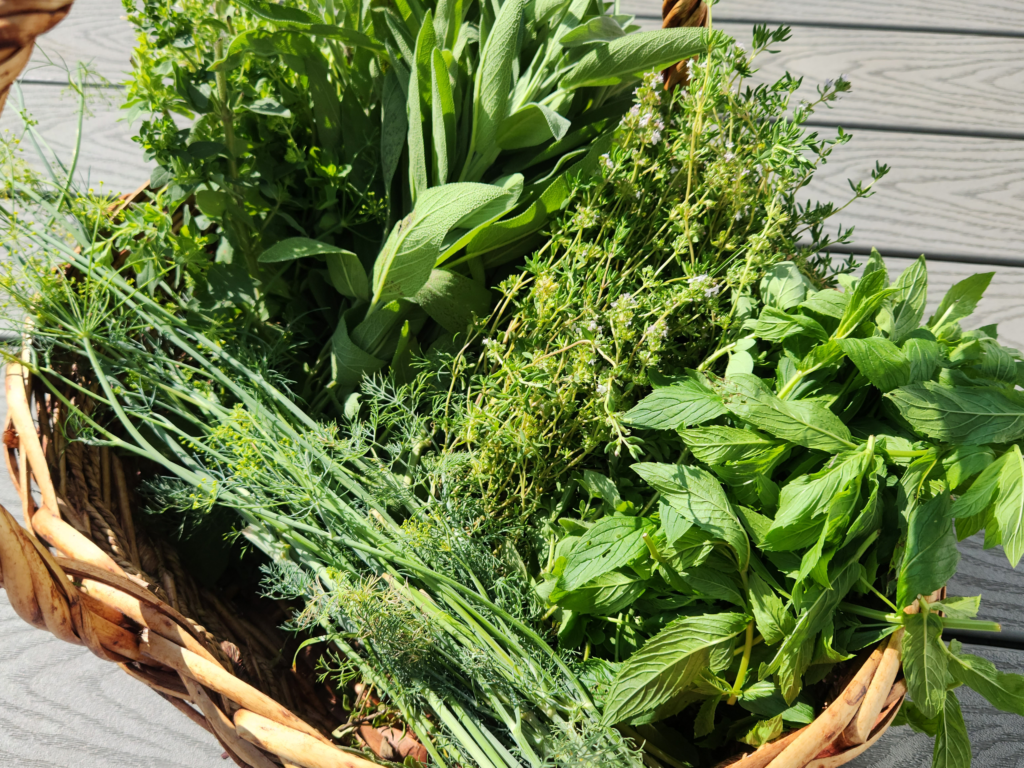
Start with the classics: basil, mint, oregano, thyme, chives, sage and parsley. All of these will grow well in pots and you can pick the ones you use the most in the kitchen. Also read, 4 Easy Herbs To Grow for Beginners (Simple, Low-Maintenance Perennials).
Basil loves a full-sun spot, while mint and parsley are happy with a bit of afternoon shade. Just be warned, mint is a spreader. Keep it in its own pot so it doesn’t take over everything else.
Harvest herbs often to keep them growing strong, and you’ll have fresh flavor at your fingertips all season long.
Tips:
- Basil loves full sun, mint prefers partial shade.
- Keep mint in its own pot, it’s a spreader!
- Pinch back regularly to encourage growth.
Check out our Pesto Recipe that is a great use of fresh basil.
Radishes: Fast, Fun, and Foolproof
Radishes are the unsung heroes of beginner vegetables. They grow ridiculously fast. Ready to harvest in as little as 3–4 weeks, and don’t need deep containers to thrive. A 6-inch pot works just fine.
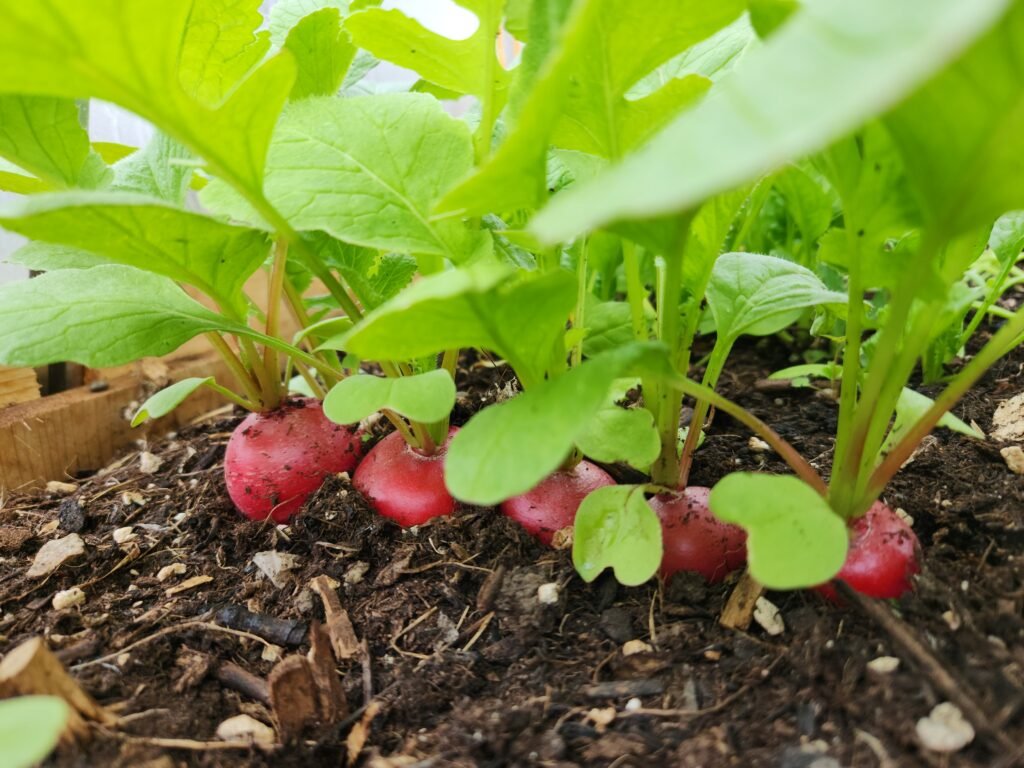
To grow radishes, sow them directly into the soil in early spring or again in late summer when the weather cools down. They don’t love the heat, but if you time it right, you’ll get crisp, peppery radishes with very little effort.
It’s also a great crop to grow with kids if you want to make gardening a family affair.
Radishes are known because of their bright red tubers, but they also have this other garden snack that you might not have heard of.
Tips:
- Grow in pots at least 6 inches deep.
- They’re ready in as little as 3–4 weeks!
- Best in cool weather, plant in early spring or fall.
Other helpful radish articles:
Strawberries: Sweet Rewards from a Small Space
Yes, you can grow your own strawberries on a balcony, and no, it’s not as tricky as it sounds. Strawberries do great in hanging baskets, railing planters, or even vertical planters.
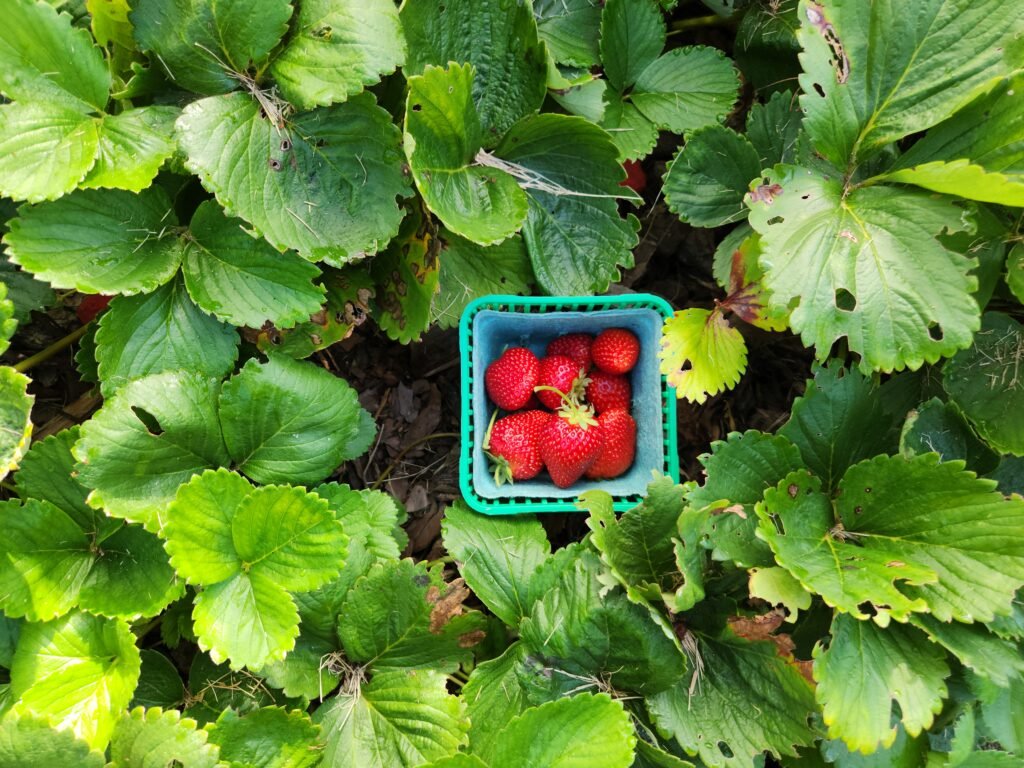
Choose a compact or trailing variety, give them lots of sun, and make sure the soil stays moist (but not soggy). If birds find your fruit before you do, a bit of netting will keep them at bay. We have more tips to protect your strawberry plants here.
Nothing beats the taste of a just-picked berry you grew yourself.
Tips:
- Choose a compact or trailing variety.
- Ensure 6–8 hours of sun per day.
- Protect from birds with netting if needed.
Peppers: Small Plant, Big Payoff
Peppers are surprisingly well-suited to container life. Whether you go for sweet bell peppers or spicy jalapeños, they thrive in sunny, sheltered balconies where they can soak up the heat.
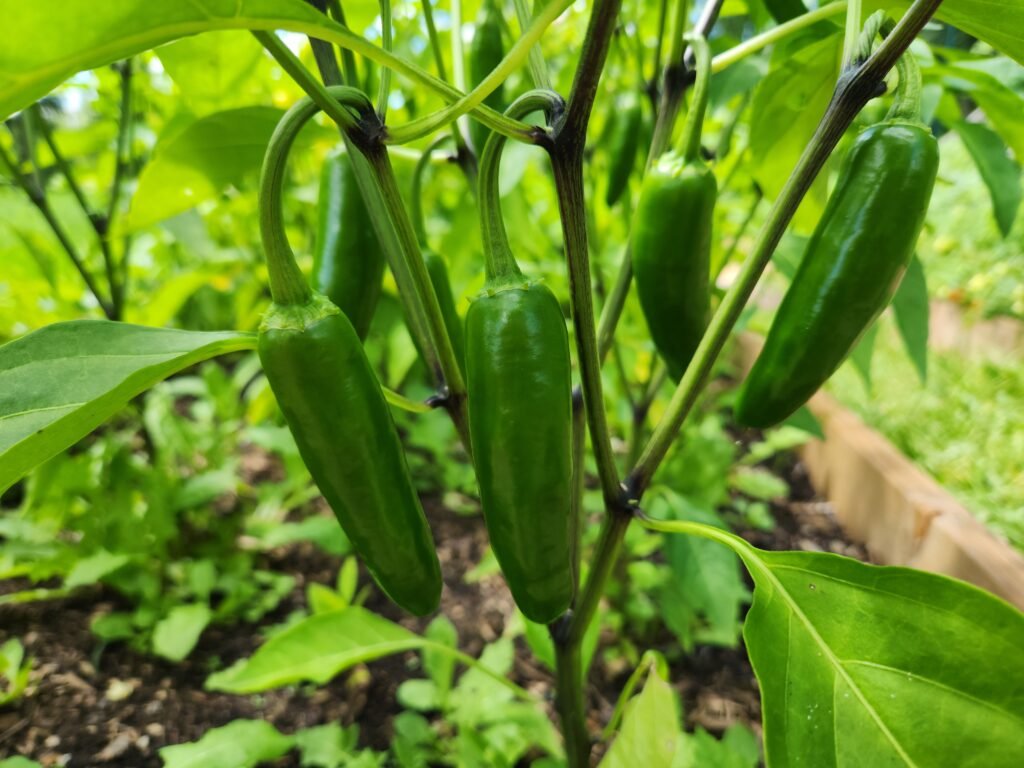
Give them a pot that’s at least 10–12 inches deep, and choose a compact or patio variety if possible. They’ll need regular watering and the occasional boost with a veggie fertilizer, but once they start producing, they don’t stop.
Plus, the plants themselves are pretty enough to double as decor.
Peppers may require staking with a simple piece of wood or tomato cage if the plants get large enough. Read all about How to Grow Peppers here.
Tips:
- Use at least a 12-inch pot.
- Provide full sun and regular watering.
- Harvest frequently to encourage more flowers.
Recap of Balcony Gardening for Beginners
Even if you’re new to gardening, balcony vegetables are easy to start with. Begin with just a few containers and 2–3 vegetables like lettuce, tomatoes, or herbs. Make sure your balcony gets at least a few hours of sunlight and use quality potting mix made for containers.
Potting Mix, Watering, and Feeding for Balcony Vegetables
- Potting mix: Choose a light, peat/coir-based container mix with perlite for drainage. (Avoid garden soil; it compacts and drains poorly in pots.)
- Watering: Check moisture daily. Water thoroughly until it drains out the bottom; don’t leave pots sitting in water. In hot spells, you may water once daily for small pots.
- Fertilizing:
- At planting: mix in a slow-release balanced fertilizer (following label rates).
- During growth: every 2–4 weeks, use a water-soluble balanced feed for leafy crops; switch to a bloom/fruiting feed for tomatoes/peppers once they flower.
Managing Sun, Heat, and Shade on a Hot Balcony
- Fruiting crops (tomatoes, peppers, strawberries) want full sun.
- Greens and herbs (lettuce, parsley, mint) happily grow in partial shade.
- On very hot balconies, give tender plants mid-day relief using a light shade cloth or position taller plants (tomatoes/peppers) to cast shade on lettuce and herbs.
- Water early on hot days; mulch the surface with coconut coir chips or straw to reduce evaporation.
What to Grow Together (Container Companions)
- Full-sun pot: Cherry tomato (center) + trailing thyme or oregano around the edge.
- Heat-loving pot: Pepper + basil (just watch spacing).
- Partial-shade pot: Mixed leaf lettuces + chives or parsley.
- Hanging basket: Strawberries + trailing thyme.
Simple Planting Calendar (Zone 5B)
- April–May: Sow lettuce and radishes; plant strawberries once danger of hard frost passes.
- Late May–June: Transplant cherry tomatoes and peppers after frost; start basil.
- June–August: Succession sow lettuce (morning sun/afternoon shade).
- Late August–September: Sow final round of radishes and lettuce for fall.
Season ending tip: At the end of your balcony gardening season, try saving your own vegetable seeds for next year.
Final Tips for Balcony Gardeners:
- Use high-quality potting mix designed for containers.
- Group plants by sunlight needs to make care easier.
- Add a splash of color with decorative pots or vertical stands.
Tip for Hot Balconies: If your space gets too hot, add light shade cloth or position taller plants (like tomatoes or peppers) to provide natural shade for smaller ones like lettuce and herbs.
FAQ: Growing a Balcony Garden
Great beginner options include cherry tomatoes, lettuce, peppers, radishes, strawberries, and common herbs like basil, parsley, thyme, and chives.
For small spaces, choose compact or patio varieties: cherry tomatoes, snack peppers, cut-and-come-again lettuces, and herbs. They’re productive and container-friendly.
Lettuce, parsley, mint, and chives tolerate partial shade. Fruiting plants (tomatoes, peppers, strawberries) prefer full sun.
Yes. Many balcony vegetables do well in 6–12 inch deep containers. Use quality potting mix, ensure drainage, and water consistently.
Use light shade cloth, position taller plants to cast shade on tender greens, and water early in the day. Mulch the soil surface to reduce evaporation.
Mix in slow-release fertilizer at planting, then feed every 2–4 weeks with a water-soluble fertilizer. Switch to a bloom/fruiting formula when tomatoes and peppers flower.
Conclusion: Your Balcony Garden Awaits!
Starting a balcony garden might seem daunting, but with these six beginner vegetables in your toolkit, you’re already halfway to success. Remember, you don’t need acres of land or years of experience to grow fresh food. You just need a few pots, some sunlight, and the willingness to get your hands a little dirty.
Whether you’re harvesting juicy cherry tomatoes or snipping herbs for tonight’s dinner, every plant you grow is a win. So go ahead, claim that small space and turn it into your personal green paradise. Your future self (and your taste buds) will thank you!
We hope you enjoyed this growing guide. If you did make sure you check out the other growing guides, seed saving guides and our recipes. We are growing our website with more articles all the time, and we invite you to grow with us. Whether you’re a seasoned gardener or just starting out, growing vegetables can be an enriching experience. If you have any questions or want to share your gardening journey, feel free to leave a comment below. Happy gardening!

